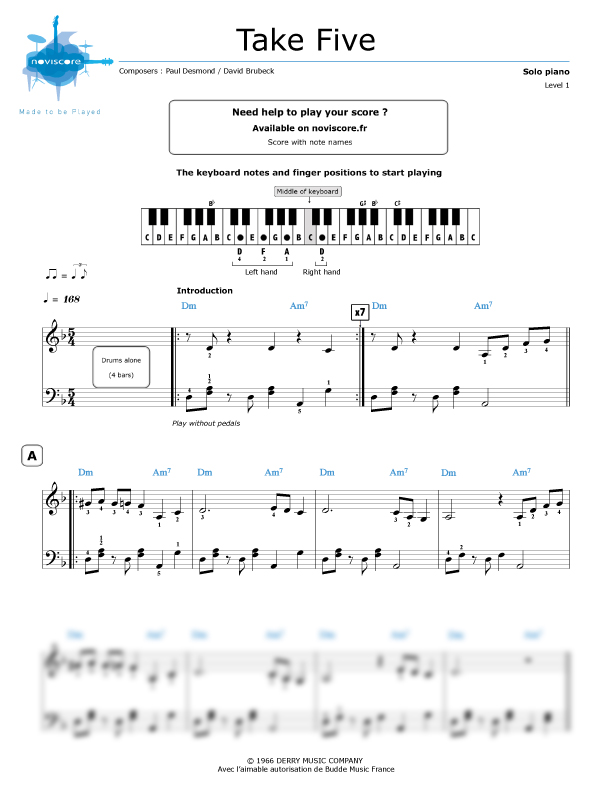

In this, it’s pretty unique among the “songs” the comprise The 143. It’s not dance music, and can be appreciated seated, but let’s not dismiss nodding as anything other than a valid and primal response. In this, it’s closer to eternally interpretable classical than the fixed formulas of pop. You don’t need to be a scholar to surmise that jazz is less about the composition and more about the execution. What a swell guy.) We have Joe Morello to bow down to for that smoky beat, and Eugene Wright for the sparing stand-up bass, although it’s the foregrounded alchemy of Brubeck’s languid ivory-tickling and Desmond’s airy sax that clinches the tune. (I just read on Wikipedia that he bequeathed his royalties to the American Red Cross, who still get a “check” every year.

(By the way, don’t be impressed by the way these names trip off my typing fingers I had literally never heard of these people before Keech became the jazzmaster to my Grasshopper at Nene College.)īrubeck’s writing partner, saxophonist Paul Desmond, who composed Take Five, was also white. Ironic, you might say, that the first jazz entry in The 143 should come from a white pianist and composer, but the two-tone multi-ethnicity of postwar jazz is what made it so appealing to so many kids in the shadow of the Atom bomb, as likely to tap a toe to the cool jazz of Stan Getz, Chet Baker or Gerry Mulligan as Miles Davis or Dizzy Gillespie. Both men bent my ear away from the pale-faced 4/4 rock that dominated my core. Also, I’d met a card-carrying jazz musician and expert, fellow art student Dave Keech, whose influence on my musical outlook was as seismic as that of Frank Wilson, my first 6 Music producer, 20 years later. I’ve stated elsewhere that jazz entered my life in a more conscious way in the mid-80s, when the form was infusing much of the modern indie pop I was listening to (blimey, including The Cure) and sounding a lot like summer. What’s remarkable about it is the fact that an instrumental workout in quintuple time inspired by Turkish folk music Brubeck had heard on tour became a hit at all.

But since jazz was never really a singles club (and Take Five was a five-and-a-half minute album track by birth, talked down to three for release as a 45 with Blue Rondo A La Turk by CBS boss Goddard Lieberson), it’s the wrong yardstick. The Encyclopedia Britannica states that Take Five is the best-selling jazz single of all time and the first to sell a million copies.
Take 5 piano tv#
I usually stick a pin in 1970 as the year I first became aware of which songs I was actually hearing through the radio (the birth of a collector and archivist), although TV theme tunes lodged much earlier, as there’s a feted reel-to-reel recording of me, aged two, parroting the themes to The Monkees, Z-Cars and Dee Time into a fuzzy mic, much to my Dad’s glee.

I may have first heard it in the womb in late 1964 and early 1965, or in my cot thereafter. It feels to me as if Take Five has always been in the background, either as the accompaniment to some TV show, laid across a montage or played over a testcard. How do you pinpoint when you first heard one of the most popular jazz hits of all time? Especially one recorded before your parents had even got married. Description: single album track, Time Out


 0 kommentar(er)
0 kommentar(er)
